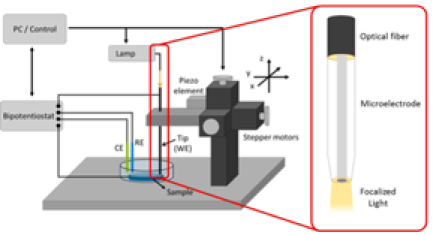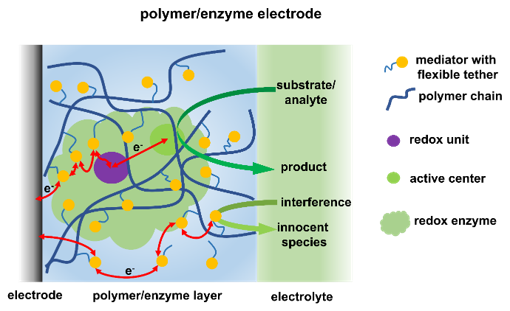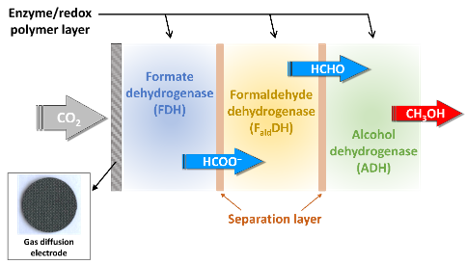Photosynthetic protein complexes are attractive building blocks for the fabrication of semi-artificial energy conversion devices. The incorporation of isolated photosynthetic protein complexes into a redox polymer matrix is a promising strategy for the study of intrinsic protein properties, such as function and electrochemical communication pathways, owing to the establishment of a fast mediated electron transfer between the electrode surface and the active site inside the protein. The fabricated bioelectrodes are evaluated using a scanning photoelectrochemical microscope (SPECM), in which microelectrode tip is used simultaneously as electrochemical probe and as source for irradiation, to analyze the potential limitations.

Biosensors rely on the intrinsic specificity of enzymatic reactions for the detection of important analytes like glucose or lactate among others. Electrochemical biosensors are particularly attractive due to their specificity, fast response time, sensitivity, and low detection limit. Immobilization of the proteins in redox polymer matrices with suitable redox properties electrically wires them to the electrode regardless of the orientation while also protecting the enzymes against high protein deactivation and denaturation due to the hydrated environment. Additional use of polymer coatings can increase the stability of the biosensor, change the linear detection range, or introduce specific properties like resistance to protein absorption or elimination of interfering species

Combining the fields of electrocatalysis and biocatalysis leads us to the field of bioelectrocatalysis. Thereby, biological entities, like enzymes, are coupled to an electrode surface and used to catalyze a specific reaction. Enzymes are of particular interest due to their ability for the effective catalysis towards specific products under mild conditions. While initially they have been employed more in the field of biosensing, nowadays especially the field of energy conversion is a field of substantial interest. For the formation of valuable products different enzymes can be used, both isolated and in a cascade system. Enzymatic cascade systems enable the ongoing conversion of formed intermediate products to more complex molecules. Thereby, it allows us to thrive for example for the reduction of CO2 towards alcohols.
